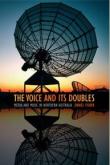AustLit
Latest Issues
AbstractHistoryArchive Description
'Beginning in the early 1980s Aboriginal Australians found in music, radio, and filmic media a means to make themselves heard across the country and to insert themselves into the center of Australian political life. In The Voice and Its Doubles Daniel Fisher analyses the great success of this endeavor, asking what is at stake in the sounds of such media for Aboriginal Australians. Drawing on long-term ethnographic research in Northern Australia, Fisher describes the close proximity of musical media, shifting forms of governmental intervention, and those public expressions of intimacy and kinship that suffuse Aboriginal Australian social life. Today’s Aboriginal media include genres of country music and hip hop; radio requests and broadcast speech; the visual graphs of a digital audio timeline; as well as the statistical media of audience research and the discursive and numerical figures of state audits and cultural policy formation. In each of these diverse instances the mediatized voice has become a site for overlapping and at times discordant forms of political, expressive, and institutional creativity. ' (Source: Publisher's website)
Notes
-
This work contains six chapters:
1. Mediating Kinship: Radio's Cultural Poetics
2. Aboriginal Country
3. From the Studio to the Street
4. From Radio Skid Row to the Reconciliation Station
5. Speaking For or Selling Out? Dilemmas of Aboriginal Cultural Brokerage
6. A Body for the Voice
Publication Details of Only Known VersionEarliest 2 Known Versions of
Other Formats
- Also e-book.
Works about this Work
-
Indigenous Radio and the Cultural Politics of Voice
2017
single work
essay
— Appears in: Cultural Studies Review , vol. 23 no. 1 2017; Research of sound as culturally and socially productive in human life is becoming increasingly sophisticated with contributions from scholars in media and communication studies, cultural studies, anthropology and ethnomusicology. In The Voice and Its Doubles, anthropologist Daniel Fisher draws on work with Aboriginal radio stations in Brisbane (4AAA) and Darwin (TEABBA) to build several arguments around three key imperatives that he finds underwrite Indigenous audio media production: ‘giving voice, sounding black, and linking people up’. (4) One main argument Fisher presents is that the emergence of Aboriginal Australian media production since the 1980s has produced ‘a particular sedimentation in sound of a rich politics’ (2) in which voice, race and agency are simutaneously intimately entangled and fragmented by audio technologies, the institutions of the settler state and Indigenous activism. A related argument is that the ‘ideology of voice’ reproduced in Aboriginal media organisations ‘must be drawn through audio media’s power to both amplify and unsettle the voice and the character of its bearer’. (16) Fisher sets out to disentangle the expressive, technological and institutional dimensions of these arguments about Aboriginal voice, sound and expressivity via the concept of mediatisation. Using a range of literature familiar to scholars in culture and media theory (such as Bakhtin, Briggs, Derrida, Goffman, Althusser, Bourdieu), Fisher approaches voice as sound that is always already mediated, always to some extent removed from the speaking body, and always somehow staged in and through audio technology, politics, activism and sociality.' (Introduction)
-
Indigenous Radio and the Cultural Politics of Voice
2017
single work
essay
— Appears in: Cultural Studies Review , vol. 23 no. 1 2017; Research of sound as culturally and socially productive in human life is becoming increasingly sophisticated with contributions from scholars in media and communication studies, cultural studies, anthropology and ethnomusicology. In The Voice and Its Doubles, anthropologist Daniel Fisher draws on work with Aboriginal radio stations in Brisbane (4AAA) and Darwin (TEABBA) to build several arguments around three key imperatives that he finds underwrite Indigenous audio media production: ‘giving voice, sounding black, and linking people up’. (4) One main argument Fisher presents is that the emergence of Aboriginal Australian media production since the 1980s has produced ‘a particular sedimentation in sound of a rich politics’ (2) in which voice, race and agency are simutaneously intimately entangled and fragmented by audio technologies, the institutions of the settler state and Indigenous activism. A related argument is that the ‘ideology of voice’ reproduced in Aboriginal media organisations ‘must be drawn through audio media’s power to both amplify and unsettle the voice and the character of its bearer’. (16) Fisher sets out to disentangle the expressive, technological and institutional dimensions of these arguments about Aboriginal voice, sound and expressivity via the concept of mediatisation. Using a range of literature familiar to scholars in culture and media theory (such as Bakhtin, Briggs, Derrida, Goffman, Althusser, Bourdieu), Fisher approaches voice as sound that is always already mediated, always to some extent removed from the speaking body, and always somehow staged in and through audio technology, politics, activism and sociality.' (Introduction)




